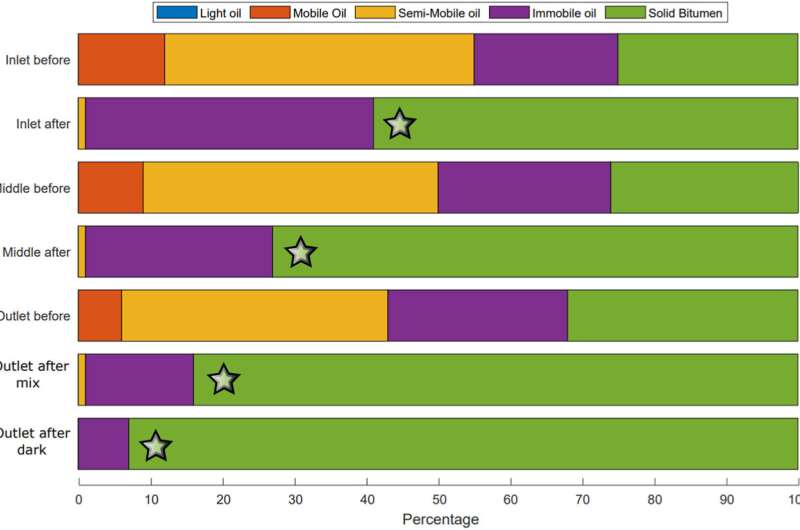Carbon Capture and Storage (CCS) is an increasingly recognized solution for mitigating global warming. By capturing carbon dioxide and storing it deep underground, CCS projects aim to reduce greenhouse gas emissions. In the Danish North Sea, researchers are exploring the potential of using chalk rocks below the sea bed, which already have depleted oil and gas reserves, as storage sites for carbon dioxide. This approach takes advantage of the existing infrastructure from the fossil fuel industry.
However, a recent study published in Marine and Petroleum Geology has highlighted potential challenges associated with the interaction between stored carbon dioxide and hydrocarbon residues in the rock. Chalk rocks can contain up to 30% hydrocarbon residues, while sandstones can contain up to 60%.
In the study, researchers from Aarhus University, Denmark, and the Energy & Environmental Research Center, U.S., conducted an experiment on a chalk sample dating back to the Upper Cretaceous period. They simulated the environmental conditions of the rock and injected supercritical carbon dioxide into it over a period of nine days. Chemical and physical analyses were then performed to examine the hydrocarbons present in the rock before and after the injection.
The results showed that the supercritical carbon dioxide caused lighter hydrocarbons to move through the rock, while heavier forms, such as bitumen and immobile oil, were left behind, potentially blocking the movement of carbon dioxide through the rock and reducing the efficiency of the CCS system. The researchers also observed an increase in heavy hydrocarbon deposits towards the exit point of the system, which they referred to as the “Avalanche Effect.”

According to the researchers, the accumulation of heavy hydrocarbons at exit points can result in blockages in the CCS system, affecting its efficiency. The solubility of hydrocarbons in response to supercritical carbon dioxide is a complex process that can be influenced by various factors. However, with further research and optimization of storage site selection based on hydrocarbon content, CCS projects still hold promise for combating global warming.
More information: Rasmus Stenshøj et al, Hydrocarbon residue in a Danish chalk reservoir and its effects on CO2 injectivity, Marine and Petroleum Geology (2023). DOI: 10.1016/j.marpetgeo.2023.106424
© 2023 Science X Network
Citation: Carbon Capture and Storage projects in Denmark at risk from bitumen formation (2023, August 8) retrieved 8 August 2023 from https://phys.org/news/2023-08-carbon-capture-storage-denmark-bitumen.html
This document is subject to copyright. Apart from any fair dealing for the purpose of private study or research, no part may be reproduced without the written permission. The content is provided for information purposes only.
Denial of responsibility! TechCodex is an automatic aggregator of the all world’s media. In each content, the hyperlink to the primary source is specified. All trademarks belong to their rightful owners, and all materials to their authors. For any complaint, please reach us at – [email protected]. We will take necessary action within 24 hours.

Jessica Irvine is a tech enthusiast specializing in gadgets. From smart home devices to cutting-edge electronics, Jessica explores the world of consumer tech, offering readers comprehensive reviews, hands-on experiences, and expert insights into the coolest and most innovative gadgets on the market.

